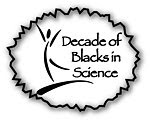Day Four of the Ethology Meeting is all about Function and Behavior.
For a long time I have always felt as if I had some sort of intution about marketing. Hmm, seems my intutition was merely cuing into my academic knowledge in animal behvaior which also includes pyschology and cognition. From the point of view of the function of behavior, there is a great intersection between Ethology, Consumer Pscyhology and Marketing that I might want to look into as a side hustle.
Today's plenary speaker is Dr. Jean-Charles Chebat who isn't an ethologist, psychologists or animal behavior scientist at all. He's a Martketing professor at HEC Montreal - a Business College in Quebec, Canada, and he studies the behavior of shoppers. Now, if you remember what ethology means - the scientific study of animal behvaior in relation to its habitat - you might be thinking, "What's the'natural habitat' of a shopper?"
Well, the shopping mall, of course. No kidding. His work on how people respond to subtle cues of sound, smell, and space (how things are arranged) is some interesting stuff. His research (and reasearch from other studies) indicates that the background music, specifically the tempo of the music, has an effect on how people pace themselves in a store, how quickly or slowly they peruse the aisles, how much time they spend in the store and not so suprisingly, how much money they spend. Aromas and colors have a simlar effect on shoppers, too. lavendar has a calming effect on shoppers.
 Here's some fresh lavendar I found in a park in Rennes, France.
Here's some fresh lavendar I found in a park in Rennes, France. Citrus makes younger shoppers feel as if they can find things more easily (then, I'll take a lemon with me the next time I visit Marshalls or TJ Maxx, I can never find anything on those long racks!)
The cool colors in the blue spectrum tend to have a calming affect on people, making them feel relaxed and comfortable while they shop. Warm colors in the red spectrum tend to encourage people to move at a quicker pace.
And the unconscious behavioral high-jacking doesn't just end with colors, smells, and space. Other people can influence shopper behavior, too.
For task-oriented shoppers like me - crowds have a negative cognitive and spending impact. Crowds can make shoppers and employees feel overwhlemed, that the product or services are somehow less valuable, and it the shopping experience feels depersonalized. Such people are less likely to spend much money or leave feeling irritaged. Perhaps a little lavender in the store and soothing music can do the trick.
However, on a smaller scale, any degree of shopper social interaction can (a friend, a relative or even strangers influence your shopping behavior). In fact, a study found that most people unconsciously fall into one of eleven customer roles (McGrath & Otnes 2000).
1. help-seeker: asks for help with a purchase, findinig something or opinion on a product
2. reactive-helper: offers help when asked
3. proactive helper: offers help without being asked
4. admirer: the co-signer
5. competitor: the body-checker and elbower in basement sales; wants to beat everyone else at acquiring the best purchases
6. complainer: person who is never happy with a store, product, or service
7. follower: people who tail strangers in a store watch what they say and buy
8. judge: slick hater who throws judgement on someone else or their purchases
9. accused: the one who worries about what others think about them and their purchases
10. spoiler: hater who always hates on someone else's purchase
11. observer: stationary, quiet person who just watches everybody else in the store
Which one are you?















2 comments:
Thats one of the unique and interesting article I've ever read..It was njoy reading it..Keep doing the good work..
Shobin
Cash Online Get Easy cash at your door step
This is so cool. I'm definitely an observer, as is the author of the study...
Hope your talk goes well.
Post a Comment